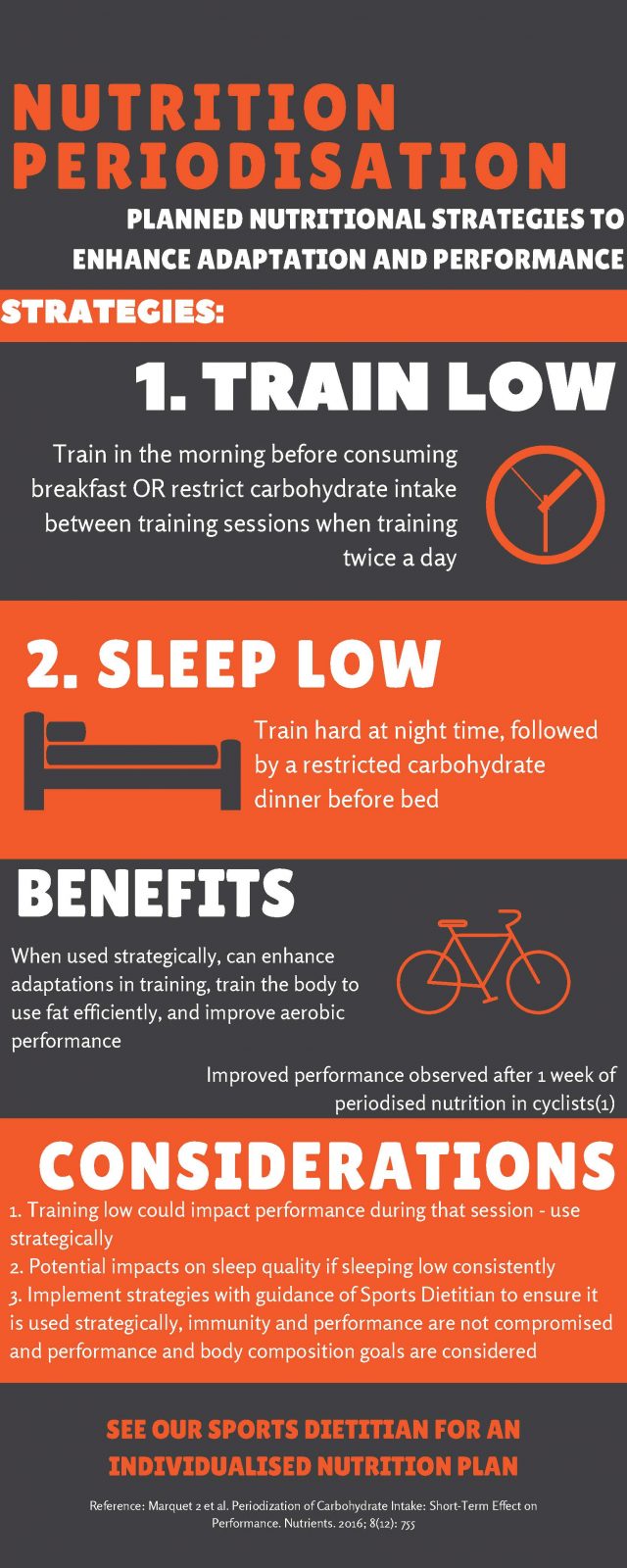If you’ve had an appointment with our dietitian already, you no doubt would have heard about carbohydrate periodisation. But what does that mean? And how do you implement a periodised nutrition plan?
Nutrition periodisation is the use of planned nutritional strategies in response to certain periods of your training program, to enhance the adaptations targeted by each exercise session or enhance performance long term. Nutrition periodisation can also have body composition benefits through manipulating your body’s use of energy during exercise.
While most athletes are great at following their training programs, the purposeful use of nutrition is often forgotten until it comes to competition or game days. Nutrition can be planned as much as training can be planned, with specific nutrition goals to accompany each specific training session. Understanding how to periodise nutrition can help you get the most out of your training program. There are a few ways periodised nutrition can be implemented.

